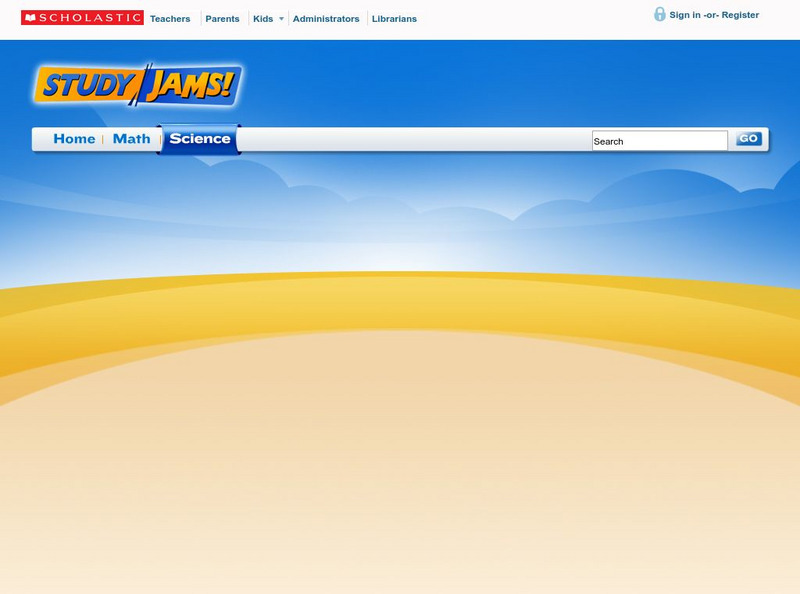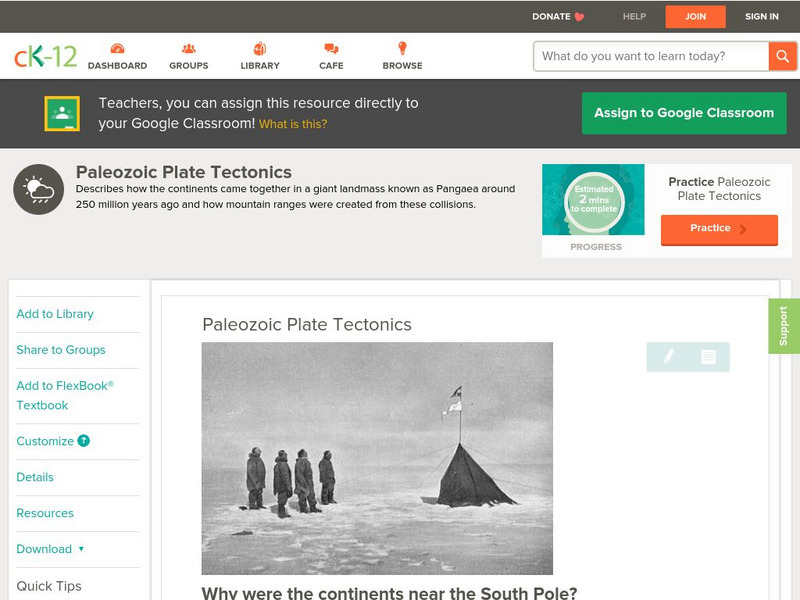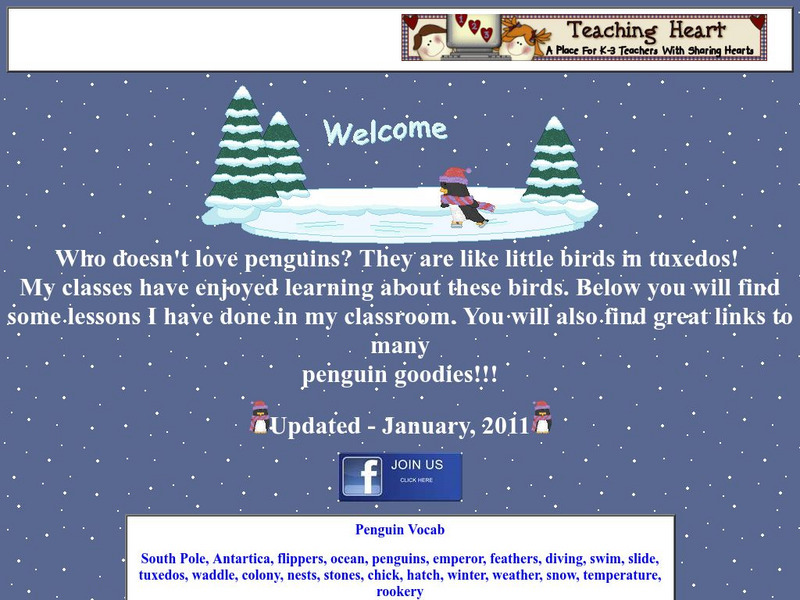University of Wisconsin
The Why Files: Energy at the Earth's Poles
A resource to help understand how the amount of energy at the Earth's poles affects polar conditions.
CNN
Cnn: Buzz Aldrin Evacuated From South Pole
Buzz Aldrin, a former astronaut who walked on the moon, was evacuated from the South Pole after his medical condition deteriorated, according to a release.
Scholastic
Scholastic: Study Jams! Science: Energy, Light and Sound: Magnetism
A slideshow and a short multiple-choice quiz on the basic concepts and vocabulary of magnetism.
Smithsonian Institution
National Museum of Natural History: Ocean Portal: Life at the Poles
The poles of the earth are often grouped together, however, they are very different. This article is a companion to the exhibit at the Smithsonian. You will learn about adaptations that organisms must make and ways that we affect the...
CK-12 Foundation
Ck 12: Earth Science: Paleozoic Plate Tectonics
How plate tectonics formed Pangaea. [Free Registration/Login may be required to access all resource tools.]
Other
Magnet Man: Cool Experiments With Magnets
Here is a lengthy listing of activities and resources pertaining to magnets and magnetism. Experiments which can be performed with many different types of magnets are described; detailed directions and photos are provided.
Alabama Learning Exchange
Alex: The Equator and the Poles
This instructional activity provides hands-on activities that will teach students about the poles and the equator. Students will be labeling a globe, recreating a globe within the classroom, and researching information on the Internet.
Utah Education Network
Uen: Continents: Antarctica
Use these internet sites and complete the activities for each one to learn more about the second smallest and coldest continent.
Other
Teaching Heart: Penguins
Use this site if you want to find ideas, lessons and activities related to penguins.
Other
Antarctic E Mail Social Studies Lesson
Why would you ever want to go to Antarctica? This lesson plan allows the students to imagine what life would be like at the bottom of the earth. The teacher can then e-mail the South Pole Observatory for answers to their questions.
ClassFlow
Class Flow: Parts of the Globe
[Free Registration/Login Required] This flipchart explores the vocabulary of studying the parts of the globe: north pole, south pole, equator, longitude, latitude, etc.
ClassFlow
Class Flow: Magnets
[Free Registration/Login Required] This flipchart helps students differentiate between and identify objects that are attracted by a magnet and those that are not attracted by a magnet.
Treehut
Suzy's World: Magnetism: Why Does a Compass Point North?
This fact sheet from Suzy's World and Suzy Cato explores how magnetism works, including "why a compass points north." Content includes fun facts, an experiment, and the ability to make your own compass.
Other
Boat Safe Kids: Longitude and Latitude
This website starts at the very beginning and explains how round globes are transferred to flat maps. Then they explain the use of longitude and latitude.
Mocomi & Anibrain Digital Technologies
Mocomi: What Is Antarctic Circle?
Learn about the Antarctic Circle, where it is located, why it's important, and other interesting facts.
Science and Mathematics Initiative for Learning Enhancement (SMILE)
Smile: About Magnets (Lesson Plan)
This site provides a lesson plan which includes a hands-on activity about magnetism and magnetic fields. Parts of the plan would be easily adaptable as a student project (for any grade level).















